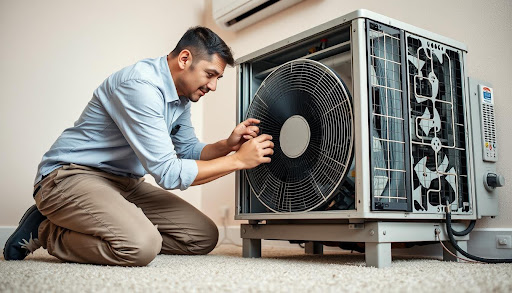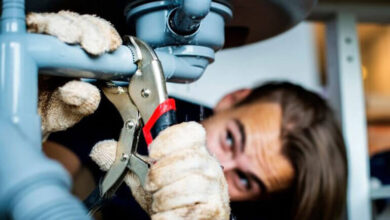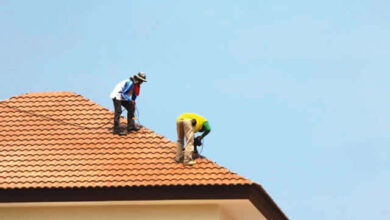AC Unit Shaking? Here’s How to Stop Your AC from Shaking

AC Unit Shakes When Running
Imagine you’re relaxing at home when your AC suddenly clunks, rattles, and bangs like a rock concert. That noise isn’t just annoying, it’s a warning sign your system needs attention.
Shaking and vibration often mean loose parts or failing components. If left unchecked, it can lead to expensive repairs or even a full system breakdown, especially in Florida’s intense summer heat.
For reliable air conditioning repair and maintenance, don’t wait. Turn off your unit if the shaking worsens, and call trusted professionals like the team in Jacksonville at (904) 314-4564. This guide will help you spot early signs and know when it’s time to call in the experts because no one should lose sleep over a noisy AC.
Key Takeaways
- Persistent vibrations signal urgent mechanical issues needing attention
- Immediate shutdown prevents costly secondary damage to components
- Simple DIY checks can identify loose parts or debris issues
- Professional assessment crucial for motor or compressor problems
- Jacksonville homeowners get priority service from Air Tolentino
- Emergency repairs available at (904) 314-4564 for Florida residents
Causes of Shaking in AC Units
If your AC unit shakes instead of cooling your home, there’s a problem. Shaking usually comes from mechanical issues, installation mistakes, or old parts. Let’s explore these causes to find out what’s wrong.
AC Unit Vibrating Causes
Basic Mechanical Issues
Loose parts often cause AC units to vibrate. Screws can come loose over time. In places like Florida, debris can block fan blades, making them unbalanced.
Reports show that 23% of vibration problems come from faulty motors.
Poor Installation Practices
An AC unit that’s not installed right will shake a lot. If it’s not level, or if parts are not mounted correctly, it will vibrate. Technicians say 1 in 5 problems come from:
- Uneven concrete pads
- Oversized duct connections
- Incorrect refrigerant line securing
Age and Wear of Components
After 10-15 years, parts like rubber bushings and motor mounts wear out. They can’t handle vibrations anymore. Fan blades made of metal can also wear out, more so in salty or extreme weather.
| Cause Type | Common Fixes | Prevention Tips |
| Mechanical | Tighten screws, clean debris | Monthly visual checks |
| Installation | Add vibration pads | Professional installation |
| Aging Parts | Replace bushings/mounts | Annual maintenance |
Pro Tip: If your unit shakes after bad weather, check for debris first. It’s usually the easiest fix!
Signs Your AC Unit Needs Attention
Your AC unit often gives subtle warnings before major breakdowns occur. Recognizing these red flags early can save you from costly repairs and keep your home comfortable. Let’s explore three key indicators that demand immediate action.
AC Unit Rattling Solutions
Unusual Noises During Operation
A quiet hum is normal, but grinding, banging, or metallic clanking signals trouble. These sounds often point to loose fan blades, worn bearings, or misaligned components. For example, a repetitive “clatter” could mean debris is hitting the condenser coil. Ignoring these noises risks further damage to critical parts like the compressor.
“Loose blades create a domino effect – they strain the motor and amplify vibrations. Addressing them quickly prevents system-wide failures.”
Vibration-Sensitive Furniture Movement
Notice your lamps wobbling or picture frames shifting? Severe shaking transfers through walls and floors, indicating:
- Extreme imbalance in rotating parts
- Failing motor mounts
- Improper unit leveling
Place a coin on nearby surfaces – if it dances during AC operation, your system needs professional AC unit rattling solutions.
Increased Energy Bills
Spiking electricity costs often trace back to an overworked AC. When components like fan motors or compressors struggle due to shaking, efficiency plummets. Compare your summer bills year-over-year – a 15%+ increase typically signals mechanical distress. Regular maintenance can restore performance and lower costs by up to 30%.
Pro Tip: If you notice two or more of these issues, schedule a diagnostic check immediately. NATE-certified technicians use vibration analyzers and thermal cameras to pinpoint problems fast.
Safety Precautions When Inspecting Your AC
Your safety is the top priority when dealing with a shaking AC unit. Here’s how to stay safe while you troubleshoot. A few simple steps can prevent AC unit shaking from becoming dangerous. Let’s cover the basics to keep you and your system safe.
AC unit safety inspection precautions
Turn Off the Power
Always start by cutting off electricity at the circuit breaker, not just the thermostat. Jacksonville’s summer heat might make you want to skip this step. But, live wires near a malfunctioning unit are very risky. For extra safety, companies like Air Tolentino offer free safety checks to make sure power is off.
Use Proper Tools
Insulated screwdrivers and voltage testers are must-haves for AC inspections. Don’t use makeshift tools like butter knives or uninsulated pliers—they can increase shock risks. Stick to these essentials:
- Rubber-grip multibit screwdriver
- Non-contact voltage detector
- Adjustable wrench with insulated handle
Ensure a Stable Working Environment
Before starting, check for uneven ground or debris around your outdoor unit. Use a sturdy ladder if needed, and never work on wet surfaces. A shaky foundation could make vibrations worse or cause falls during inspection.
How to Troubleshoot Your AC Unit
Is your AC unit vibrating like a washing machine on spin cycle? Don’t panic—most shaking issues can be resolved with a systematic approach. Let’s break down three critical areas to inspect, using tools you likely already own.
AC unit vibrating troubleshooting steps
Check for Loose Parts
Start with the simplest fix: tightening loose components. Grab a screwdriver and:
- Secure service panel screws (common culprits for rattling)
- Check compressor mounts for corrosion or gaps
- Test refrigerant line brackets by gently wiggling them
Pro tip: If screws keep loosening, try thread-locking adhesive for a permanent solution.
Inspect the Fan Blades
Misaligned or dirty blades create imbalance. Here’s how to assess them:
- Turn off power at the breaker
- Use a bubble level on the blade edges
- Clean debris with compressed air
“Even 1/8-inch blade misalignment can cause violent shaking. Always check after severe weather events.”
Look for Duct Issues
Flexible ductwork often contributes to vibration problems. Examine:
| Area | Problem Signs | Quick Fix |
| Joints | Gaps wider than 1/4″ | Apply mastic sealant |
| Supports | Sagging sections | Add metal strapping |
| Insulation | Compressed or missing | Wrap with R-6 foil tape |
When to call for backup: If these steps don’t fix your AC unit shaking, companies like Air Tolentino offer same-day diagnostics. Their technicians often resolve vibration issues in under two hours using laser alignment tools.
The Importance of Regular Maintenance
AC Unit Maintenance Tips
Shaking and noise are signs your AC needs care. Regular maintenance keeps it running well, lasts longer, and prevents vibrations caused by neglected components. Here are three key practices to avoid expensive repairs and keep your summers cool.
Scheduled Tune-Ups
Think of tune-ups as your AC’s annual check-up. A licensed HVAC technician will check electrical connections, oil moving parts, and tighten loose bolts. These visits also:
- Optimize refrigerant levels for peak cooling
- Test thermostat accuracy
- Calibrate safety controls
Air Tolentino’s Maintenance Club members get priority scheduling and 15% off replacement parts. This makes professional care more affordable than emergency fixes.
Filter Replacement
Clogged filters make your AC work harder, straining the blower motor and causing uneven airflow. In Florida’s pollen-heavy spring, replace filters every 30-45 days instead of the standard 90. Use these tips:
- Choose MERV 8-11 filters for balance between airflow and particle capture
- Mark replacement dates on your calendar
- Check filters monthly by holding them up to light
A clean filter reduces duct vibrations by up to 40%, according to HVAC efficiency studies.
Cleaning Coils and Fan
Dirt on evaporator coils traps heat, making your system overwork. Cleaning them twice a year prevents this:
- Turn off power at the breaker
- Use a soft brush on condenser coils
- Spray coil cleaner (avoid high-pressure water)
- Straighten bent fan blades with a blade straightener tool
Sticky fan blades cause imbalance, leading to wobble. If you see corrosion or cracks, get professional help right away.
When to Call a Professional
Many AC problems can be fixed by yourself, but some need a pro. Knowing when to stop DIY and call a technician is key. It keeps you safe and avoids expensive errors. Here are the signs it’s time to call a professional.
Characteristics of Major Problems
Refrigerant leaks and electrical shorts are big no-nos for DIY. They need special tools and skills because of safety and environmental laws. If you smell something sweet or your AC keeps tripping the breaker, turn it off and call for help.
Other warning signs include:
- Burning odors or smoke from vents
- Ice buildup on coils despite warm weather
- Loud screeching from the compressor
Selecting the Right HVAC Technician
Choose companies like Air Tolentino that promise 100% satisfaction guarantees and clear prices. Make sure to check:
- State-issued licenses and insurance
- Same-day service availability
- Written estimates before work starts
| Service Factor | Budget Option | Premium Option |
| Service Guarantee | 30 days | 1 year |
| Upfront Pricing | Basic quote | Itemized breakdown |
| Availability | Next business day | 24/7 emergency |
Cost Considerations
In Northeast Florida, most reliable air conditioning repair services charge $75–$150 for a diagnosis. Replacing parts can cost:
- $200–$500 for fan motors
- $1,000–$2,500 for compressors
- $400–$800 for refrigerant line repairs
Ask about seasonal discounts or payment plans. Many offer flat-rate pricing for common repairs, so you won’t face surprise costs.
DIY Fixes for Minor Issues
Minor vibrations in your AC unit don’t always need a pro. With simple tools and some care, you can fix common rattling causes. Here are three easy ways to keep your system stable.
Adjust Loose Screws
Loose mounting bolts often cause shaking. Use a torque wrench to tighten condenser bolts to 8-10 ft-lbs. This secures them without harming threads. Check these parts:
- Fan motor brackets
- Compressor base plates
- Outdoor unit casing
Don’t over-tighten copper refrigerant lines. This can lead to expensive leaks.
Reposition the Unit
Uneven installation pads cause instability. Place a carpenter’s level on top of the outdoor unit to check for slanting. If one corner is higher:
- Loosen pad adjustment bolts
- Slide shims under low areas
- Recheck levelness every ¼ inch
This method works best on concrete slabs or composite mounting platforms.
Balance the Blades
Wobbly fan blades make vibrations worse. Turn off power before checking blade alignment. Here’s a balancing trick:
| Step | Tool Needed | Time Required |
| Mark heavy spots with chalk | Chalk or grease pencil | 2 minutes |
| Attach coin weights | Nickel coins + duct tape | 5 minutes |
| Test rotation smoothness | Gloved hand | 3 minutes |
Safety Tip: Never force blades to spin manually while the unit is powered on—electric shock risks are real.
These DIY fixes can save you $150+ in service calls for minor issues. If shaking persists after these steps, check Section 7 for professional help needs.
Upgrades That Can Mitigate Shaking
If your AC unit still shakes after basic troubleshooting, strategic upgrades can provide long-term solutions. These improvements not only reduce vibrations but also enhance efficiency and extend your system’s lifespan. Let’s explore three effective upgrades to stabilize your unit and achieve quiet AC unit operation.
Installing Vibration Pads
Vibration pads act as shock absorbers between your AC and its base. Rubber pads are affordable and work well for moderate climates, while neoprene options last longer in extreme temperatures. For best results:
- Choose pads rated for your unit’s weight
- Place them under all contact points
- Check for compression every 6 months
Thicker 1.5-inch pads typically outperform standard 0.75-inch versions, reducing noise by up to 40% according to HVAC supply tests.
Upgrading to Quieter Models
Modern units like Lennox’s QuietZone™ system use advanced compressors and variable-speed fans to minimize vibrations. Look for:
- SEER ratings above 16 for energy-efficient operation
- Brushless DC motors that reduce friction
- Sound ratings below 55 decibels
These models often pay for themselves within 3-5 years through energy savings and reduced repair needs.
Proper Mounting Techniques
A secure installation prevents 80% of vibration issues. Professional technicians recommend:
- Hurricane-grade brackets for rooftop units
- Anti-tip pads on sloped surfaces
- Spring-loaded mounts for concrete slabs
Always verify your local building codes – some areas require specific seismic restraints for outdoor units.
Combining these upgrades creates a multi-layer defense against AC shaking. Start with vibration pads for immediate relief, then plan for larger upgrades during your system’s natural replacement cycle.
Understanding AC Unit Components
Your AC system has three key parts that work together to cool your home. When these parts don’t work right, they can cause vibrations. Let’s explore how each part helps your AC run smoothly and what happens when it doesn’t.
Compressor and Its Role
The compressor is the heart of your AC, moving refrigerant through the system. Oversized compressors can cause vibrations. This usually happens when:
- Installers focus on cooling speed over balance
- Previous owners added parts unevenly
- Manufacturers use the same parts for different sizes
| Compressor Size | Vibration Impact | Energy Efficiency |
| Properly Matched | Minimal movement | Optimal cooling per watt |
| Oversized | Visible shaking | 15-20% higher consumption |
The Importance of Fan Functionality
Your AC’s blower wheel and condenser fan work together like dancers. If one blade bends, it creates imbalance. You’ll notice this when:
- Grinding noises happen at startup
- Vibrations get worse during fast cycles
- Nearby things shake consistently
The Impact of Ductwork on Performance
Bad or too small ducts make your system work too hard. This causes turbulence that shakes vents and trunks. Techs use smoke pencils and gauges to find problems. Air Tolentino’s matching service helps by:
- Checking duct sizes
- Figuring out CFM needs
- Recommending fixes
“Proper component pairing reduces vibration risks by 68% compared to mismatched systems.”
Air Tolentino HVAC Matching Report
Maintaining Optimal Performance After Fixes
To keep your AC unit running well, you need to stay on top of it even after fixing shaking issues. Regular habits are key to keeping it efficient and avoiding future problems. Start with simple tasks that fit into your monthly routine.
Regular Check-ins for Movement
Check your outdoor unit every 30 days for any signs of movement. Look for gaps between the base and mounting pads. Use a bubble level to make sure it’s level.
Services like Air Tolentino’s 24/7 monitoring can alert you if vibrations get too high.
Monitoring Energy Efficiency
Use tools like JEA SmartHub to track your energy use monthly. Look for big changes in kWh consumption from year to year. If it’s higher than usual, it might mean there’s a problem with airflow or the compressor.
Keeping an Eye on Noise Levels
Use a decibel meter app on your phone to check the noise level weekly. Normal AC systems make sounds between 55-70 dB. If the sound gets louder, it could mean something’s loose or the motor is failing.
Follow these AC unit maintenance tips to make your system last longer. Mix DIY checks with yearly professional tune-ups for the best care. Catching problems early helps avoid shaking and keeps cooling costs steady. Share your tips or ask questions in the comments to help others.
FAQ
Why is my AC unit shaking when it turns on?
Shaking during startup often stems from loose screws, worn bushings, or an unbalanced fan blade. Florida storms can push debris into your unit, worsening these issues. Air Tolentino’s decade of installation experience helps diagnose and resolve these problems quickly.
Can a vibrating AC unit damage my home?
Yes! Persistent vibrations can loosen electrical connections, crack refrigerant lines, and even shake furniture. If you notice clanking sounds or rattling ducts, schedule a diagnostic check with Air Tolentino’s NATE-certified technicians to prevent costly repairs.
How do I safely inspect my AC unit for loose parts?
Always turn off power at the breaker—not just the thermostat. Use insulated tools to tighten service panel screws and check blade alignment with a bubble level. Jacksonville homeowners can request Air Tolentino’s free safety check for peace of mind.
Will changing my air filter reduce AC vibrations?
Absolutely. Clogged filters strain the blower motor, causing imbalance. Replace filters quarterly, and join Air Tolentino’s Maintenance Club for priority scheduling and 15% off parts.
When should I call a pro instead of trying DIY fixes?
If you smell refrigerant, hear electrical buzzing, or see ice on coils, shut off the system and call Air Tolentino immediately. Their team offers upfront pricing and a 100% satisfaction guarantee for complex issues.
What torque specs should I use for condenser bolts?
Most residential units require 25–35 ft-lbs for mounting bolts. Use a torque wrench to avoid over-tightening, which can warp the base. For uneven pads, Air Tolentino recommends neoprene vibration pads rated for Florida’s humidity.
How do SEER ratings affect AC vibration levels?
Higher SEER units like Lennox QuietZone™ systems have variable-speed compressors that minimize harmonic vibrations. Air Tolentino’s QuietZone installations include hurricane-grade brackets to withstand Jacksonville’s storm season while reducing noise.
Can bent fan blades cause my energy bills to spike?
Yes! A single bent blade unbalances the entire system, forcing the motor to work 30% harder. Track kWh usage via JEA SmartHub—if bills rise suddenly, contact Air Tolentino for blade balancing or ductwork inspections.
What’s the best way to monitor post-repair vibrations?
Use a smartphone decibel meter app to track noise levels monthly. Enroll in Air Tolentino’s monitoring service, which sends text alerts for abnormal vibrations or efficiency drops in your Jacksonville-area home.
Are rubber vibration pads better than concrete blocks?
Rubber or neoprene pads absorb 80% more vibration than concrete. Air Tolentino uses UV-resistant pads rated for Florida’s climate, paired with helical anchors to prevent shifting during heavy rains—key for homes near St. Augustine’s flood zones.




